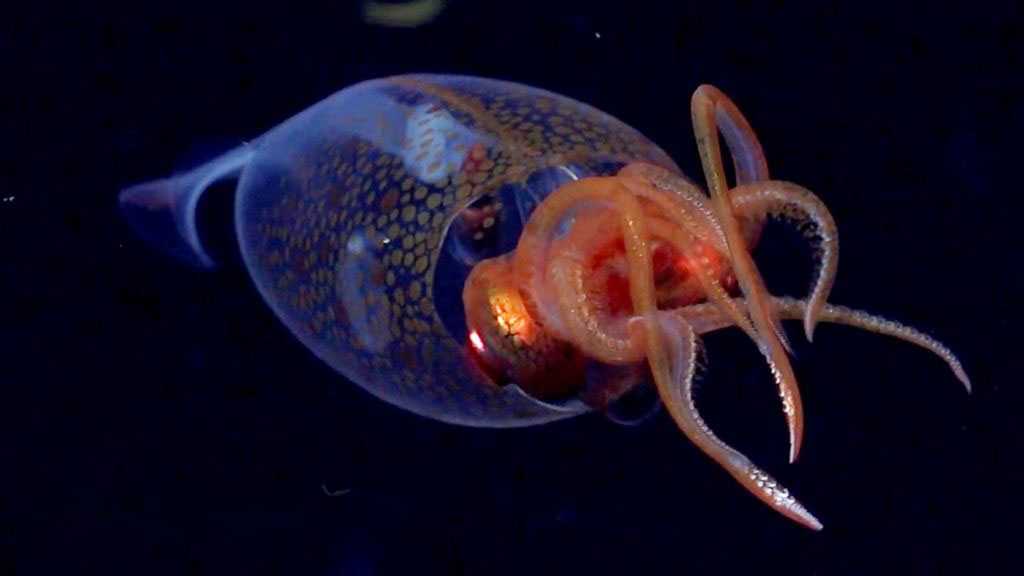First-Ever Footage Captures Rare Juvenile Colossal Squid in Deep Ocean

By Staff, Agencies
In a groundbreaking discovery, scientists have captured the first confirmed footage of a live colossal squid in its natural environment, marking a major milestone in deep-sea exploration.
The video was recorded during a recent expedition by the Schmidt Ocean Institute [SOI] in the South Atlantic Ocean, offering an unprecedented look at one of the ocean's most elusive and massive creatures.
The juvenile colossal squid [Mesonychoteuthis hamiltoni] was filmed at a depth of about 600 meters near the South Sandwich Islands. Although the species was identified over a century ago, this is the first time it has been observed alive in its natural habitat.
Measuring just 30 centimeters long, the young squid was a fraction of its potential adult size — colossal squids can grow up to 23 feet, or possibly even 46 feet, and weigh up to 500 kilograms, making them the heaviest invertebrates on Earth.
Captured on March 9 using the remotely operated vehicle [ROV] SuBastian, the footage was part of a 35-day mission focused on discovering new marine life. Alongside the colossal squid, the expedition also recorded the first-known footage of another rare species — the glass squid Galiteuthis glacialis — during a separate dive near Antarctica in January.
The expedition, part of the Ocean Census initiative, involved international collaboration aboard the research vessel Falkor [too]. Led by the SOI in partnership with the Nippon Foundation–Nekton Ocean Census and GoSouth, the team aimed to explore uncharted regions of the Southern Ocean.
Dr. Kat Bolstad of Auckland University of Technology, who helped verify the footage, described the moment as both thrilling and humbling. “For a century, we’ve only known these animals through remains found in predator stomachs or as bycatch. Seeing one alive, moving freely, is extraordinary,” she said.
Researchers identified the colossal squid by its distinctive arm hooks — a key trait distinguishing it from its close relative G. glacialis. The juvenile’s translucent body, typical of its early life stage, also provided valuable insight into the squid's development.
While previous encounters with colossal squid have involved dead or dying specimens, this footage shows a healthy, swimming squid — offering fresh insight into its behavior, appearance, and ecology. The back-to-back discoveries of two rare squid species underscore how much of the deep Southern Ocean remains unexplored.
“These sightings are a reminder of how much mystery the ocean still holds,” said SOI executive director Dr. Jyotika Virmani. “With advancing technology and international collaboration, we’re finally getting glimpses into a hidden world we’ve barely begun to understand.”
Comments
- Related News

Jellyfish Swarm Shuts Down French Nuclear Plant
3 months ago
Young Europeans Losing Faith in Democracy!
4 months ago

